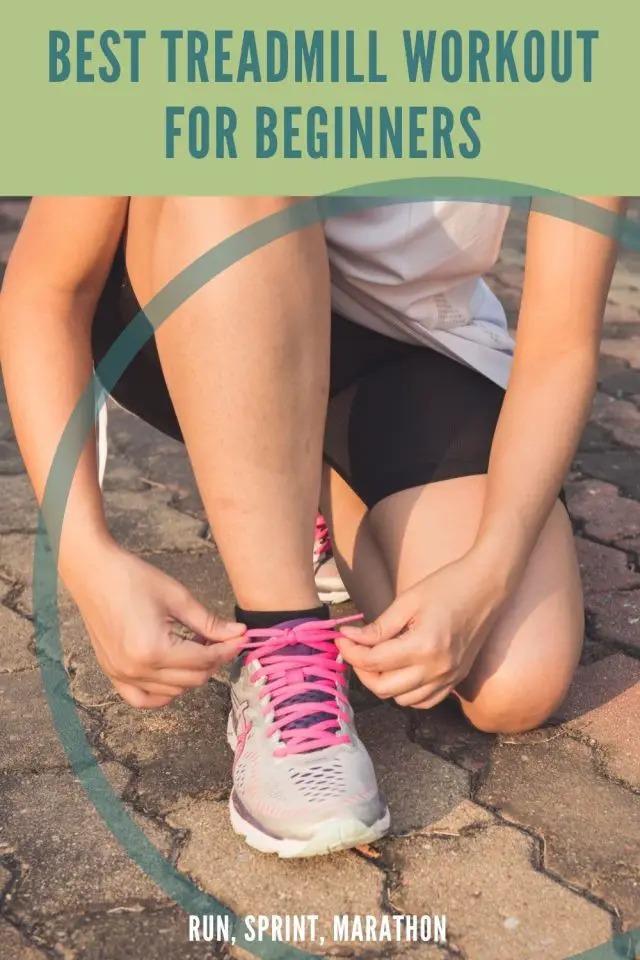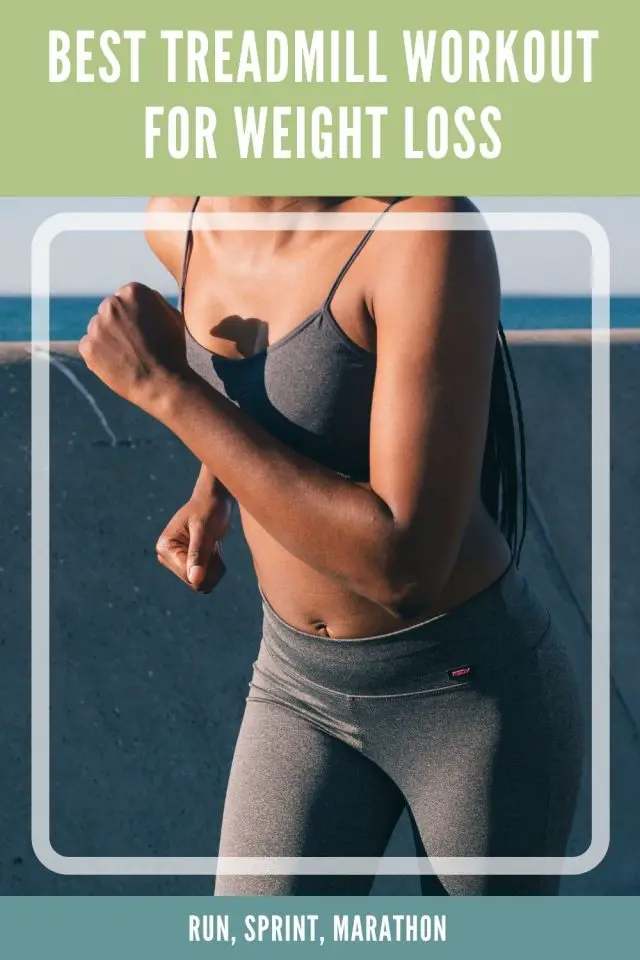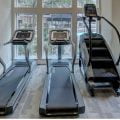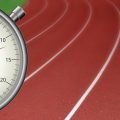There are many treadmill workouts out there, some are aimed at beginners, some at athletes, and everything in between. But what is the best treadmill workout for weight loss? This article investigates.
How to Train for Weight Loss
To achieve weight loss, you need to create a calorie deficit. This is where you are burning more calories than you are consuming (through food and drink). The larger the deficit, the faster you’ll burn fat, at least in theory.
In practice, this only works for so long. Create too large a deficit and your body won’t have enough energy to exercise. Which is why most fitness experts recommend creating a small to medium sized deficit, something from 200-500 calories.
You can create this deficit by:
- Eating less (dieting)
- Moving more (exercise)
Or by both eating less and moving more. This last solution makes the most sense, you can create a bigger deficit without having to exercise too hard or to drop too many calories from your diet.
Exercising for weight loss can come in many forms, weight training, sports, walking, running, or using cardio machines such as X-trainers, rowers, and of course treadmills.
The trick is to exercise within the fat burning zone. For this you will need a heart rate monitor, as it is all based on your pulse. The fat burning zone is around 70% of your max heart rate (MHR).
Finding your MHR is easy, you just subtract your age from 220. If you are 20 your MHR is 200, if you are 50 your MHR is 170. Obviously, a very fit 50 year old could have a higher MHR than a very unfit 40 year old, and there are lots of people whose actual MHR may not be anywhere near the estimate.
But it’s just a rough guide.
Once you’ve found your MHR, work out 70% of it. For that 20 year old, 70% of 200 would be 140, for a 50 year old it would be 119.
Your training session should last around 20-60 minutes, depending on how fit you are. But this is just the most common way to train for weight loss. There are many other methods which we will outline in this article.
Building Fitness Before Burning Fat
One of the obstacles that many beginners have, is a lack of cardiovascular fitness. To get into that fat burning zone (and stay there) requires a decent level of fitness, which most people who are starting out don’t actually have.
Treadmills can be incredibly useful for this, helping you to walk at a brisk pace or on an incline, then graduating to jogging, and then running. Increasing your fitness and allowing you to therefore increase the duration of your training.
You also need a high level of fitness to perform hill sprints, HIIT, and other more advanced fat burning routines.
Best Treadmill Workout for Beginners

The best treadmill workout for beginners is one that introduces you to how to utilise a treadmill. One that improves your confidence with all of the functions available to you. If your treadmill has an incline feature, then you’ll want to incorporate that into your training.
We’d recommend a 20 minute workout, which starts off very easy increases in difficulty up to the 10 minute mark, and then slowly goes back down again for the final ten minutes. Something like this:
- Low speed, no incline
- Low speed, small incline
- Medium speed, small incline
- Medium speed, medium incline (10 minute mark)
- Medium speed, small incline
- Low speed, small incline
- Low speed, no incline (20 minute mark)
Depending on your current fitness, you could increase the speed, so you start out at a jog rather than a walk. This method will improve your cardiovascular fitness, and perhaps more importantly, it will help you get to grips with the treadmill and build some confidence.
Treadmill Walking Workouts for Weight Loss
Walking can help with weight loss, but not always. If you lead a sedentary life and barely exercise, then walking on a treadmill at a normal pace might help. But it would take a long time to achieve that. You’d have to walk for a couple hours at least!
However, brisk walking, or walking at an incline, could achieve the same results in a fraction of the time. A brisk walk would be walking at a speed where you would find it difficult to carry a conversation. At that speed, your heart rate would be at a decent level and you’d feel like you were almost running.
Alternatively, an incline walk could be performed at a slower speed, but still be a superb calorie burning exercise.
If you are very new to fitness, or have any mobility issues, then a simple walk at a regular pace may be good enough for fat burning. At least initially. Focus on increasing duration, intensity, and/or incline until you have improved your fitness sufficiently.
One of the benefits of treadmill walking is that it is safer and more controllable than regular walking. Great for older people or people who live in busy cities. You can pop on some headphones and listen to a podcast or some music. Some treadmills even offer you the opportunity to attach your tablet or mobile device so you can watch your favourite shows.
Best Treadmill Workout for Experienced Runners
There is a lot of debate as to whether low intensity steady state (LISS) is more or less effective than high intensity interval training (HIIT). When compared side by side, LISS tends to burn more calories during the workout itself, whereas HIIT burns more calories post-workout.
But the issue that is often overlooked is that most people are not fit enough to perform HIIT properly. As such, LISS is a better option for beginners. Experienced runners and other very fit people may prefer HIIT though as it is much more efficient. You can get your workout done in 10-20 minutes rather than 90.
Hill sprints are probably the best treadmill workout for experienced runners, that’s because they are very easy to set up, and don’t involve a lot of hopping on and off, which is how regular HIIT sessions have to be performed.
To perform hill sprints, all you need to do is decide on the length of the hill. Let’s say 200m and then decide on the incline. Don’t go too high, as a little will go a long way. Perhaps a 3-4 degree incline.
- Walk/run at a low speed and no incline for 4 minutes.
- Increase the incline and speed for the next minute.
- Then sprint at a high speed and 3-4 degree incline until the 200m is complete.
- Lower back down for 1 minute
- Walk/run at low speed and no incline for 3 minutes.
- Increase the incline and speed for the next minute.
- Then sprint at a high speed and 3-4 degree incline until the 200m is complete.
- Lower back down for 1 minute
You get the idea, this can be done for a total of 5-6 sprints, or more depending on your fitness. The duration of the sprint can be shortened if you want, but there’s not much point in increasing it past 200m. You’re only looking for about 30 seconds of max effort.
If you’re finding it too easy then increase the incline or even the speed the next time you do it. Once you’ve finished, breathe deeply, and recover. You’ll be burning calories throughout this time.

Best Treadmill Workout for Weight Loss
The best treadmill workout for weight loss is the one that you can see yourself doing repeatedly for the foreseeable future. There’s no point creating an intricate treadmill workout that is so difficult you give up after one session. Nor is there a point in creating a treadmill workout that is so dull you get bored.
Play to your strengths. If you are a beginner, then build your fitness up first, then look at training in the fat burning zone, before eventually graduating to HIIT or hill sprints.
If you are already fit, jump straight into hill sprints, these are incredible for fat burning, and can be a lot of fun to do.
Just remember, that without consistency and a calorie-controlled diet, your fat loss journey will never get off the ground. Making small changes over time is much more likely to succeed than trying to overhaul your entire lifestyle at once.
Don’t try and start a workout regime that involves daily bouts of 1 hour on the treadmill if you haven’t exercised in years. Start with a 5 minute workout and build from there. Once you are used to this, you can look at increasing the time spent per day on your treadmill.
The same thing applies to your diet. If you are dieting for fat loss, then creating a small deficit by eating slightly smaller portions during meal times, may be a better solution than deciding to jump in both feet first into a ketogenic or paleo diet. Small changes over time!






